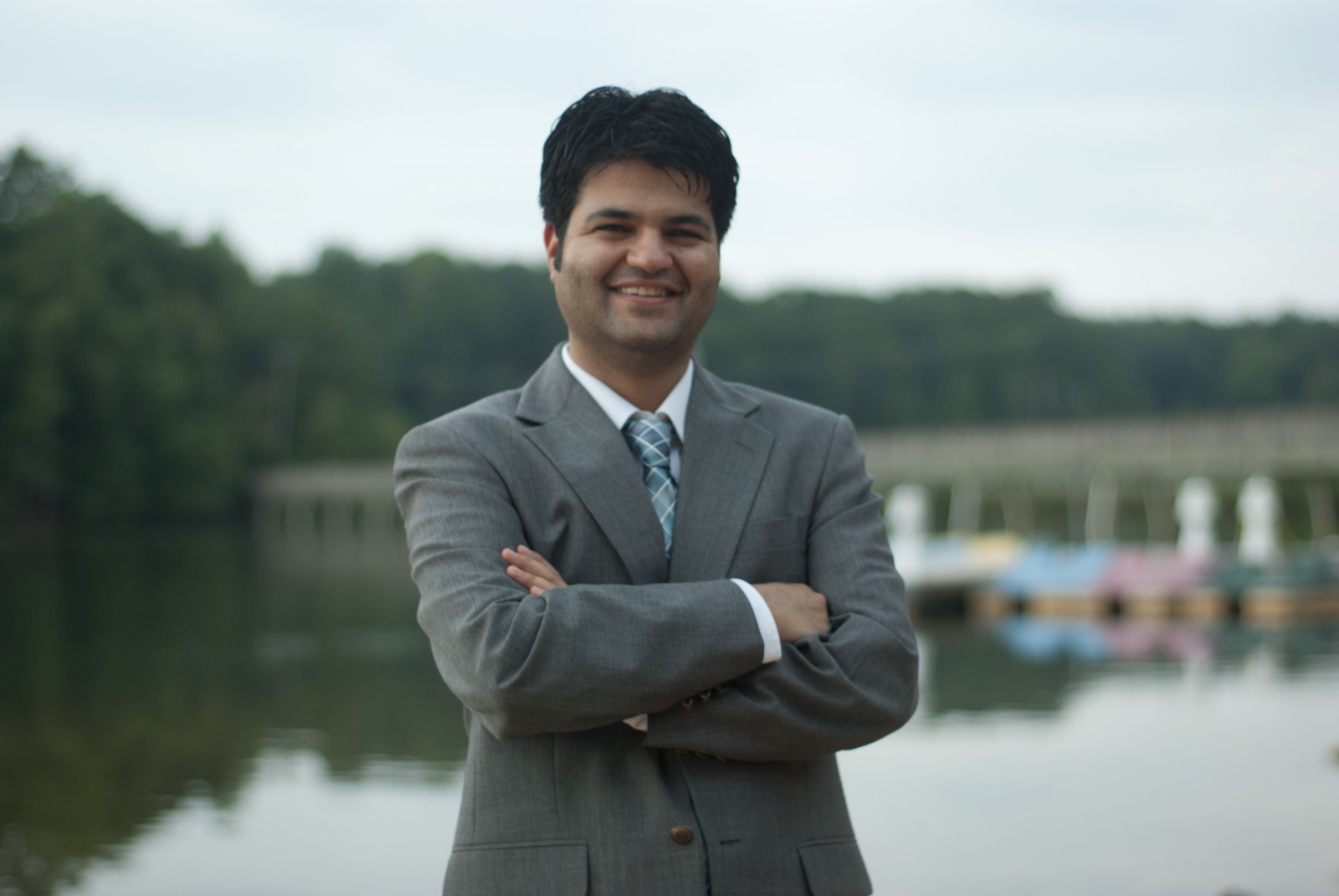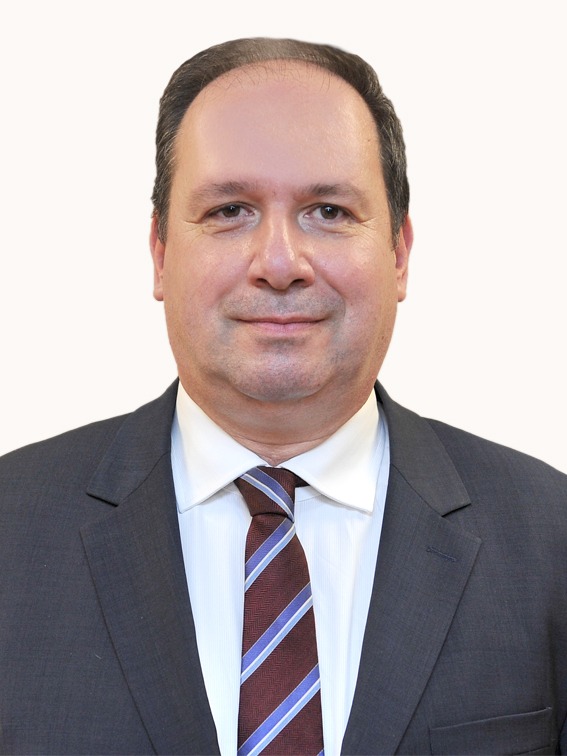
Feza Korkusuz MD completed his medical specialization in Orthopedic Surgery and Traumatology at Gazi University, Faculty of Medicine in 1992 after graduating from Ankara University Medical Faculty in 1986. Between 1989 and 1990 he studied in Osaka University Faculty of Medicine, Department of Orthopaedic Surgery from where he graduated with a postgraduate diploma. His clinical and research studies focused on Spine Surgery, Sports Medicine and Basic Musculoskeletal Research. Dr. Korkusuz worked at the Middle East Technical University (METU) as an orthopedic surgeon and Medical Director at the Medical Center, and at the Department of Physical Education and Sports as the Head of the Department until 2013. In 1994 and in 2001 he became an Associate Professor and Professor, respectively. In 1999 and 2000, he received the METU Prof. Dr. N. Parlar Foundation young investigator and the Scientific and Technological Research Council of Turkey (TÜBİTAK) Promotion Award in Medical Sciences.
Between 1991 and 2016, he was a member to the Orthopaedic Research Society. In 2008 he became an active member of the Association of Bone and Joint Surgeons (ABJS), and since 2006 he has been the corresponding and deputy editor of Clinical Orthopaedics and Related Research (CORR). In 2017, he became an active member to the Turkish Academy of Science (TUBA). He was a member of the International Cartilage Repair Society (ICRS) between 2012 and 2014. He was the Advisor to the President of TÜBİTAK between 2018 and 2021. He currently is the Chairman of the Department of Hacettepe University, Faculty of Medicine, Department of Sports Medicine.
IN 2016 Dr. Korkusuz was the secretary general of the “Deutch-Turkisches Jahr der Forschung, Bildung und Innovation; Cartilage Workshop, Ankara”. His publications on cartilage and tissue engineering are listed below:
1. Babayeva N, Dönmez G, Özçakar L, Torgutalp ŞŞ, Karaçoban L, Gedik E, Korkusuz F, Doral MN. Mean femoral cartilage thickness is higher in athletes as compared with sedentary individuals (DOI: 10.1007/s00167-020-06146-7). Knee Surgery, Sports Traumatology, Arthroscopy (ISSN: 0942-2056) 2021;29:1206-1214.
2. Karanfil Y, Babaeva N, Dönmez G, Diren HB, Eryılmaz M, Doral MN, Korkusuz F. Thirty minutes of running exercise decreases T2 signal intensity but not thickness of the knee joint cartilage: A 3.0-T magnetic resonance imaging study (DOI:https://doi.org/10.1177/1947603518770). Cartilage (ISSN: 1947-6035) 2019;10:444-450.
3. Tuan RS, Korkusuz F. Joint Cartilage. In Musculoskeletal Research and Bacis Science. Ed. Feza Korkusuz, Springer, Heidelberg, Germany, pp.367-385, 2016 (ISBN: 978-3-319-20776-6)
4. Çelik Ö, Salcı Y, Ak E, Kalacı A, Korkusuz F. Serum cartilage oligomeric protein accumulation decreases significantly after 12 weeks of running but not swimming and cycling training-A randomized controlled trial. (DOI: 10.1016/j.knee.2012.06.001) Knee (ISSN: 0968-0160) 2013;20:19-25. (PMID:22770506)
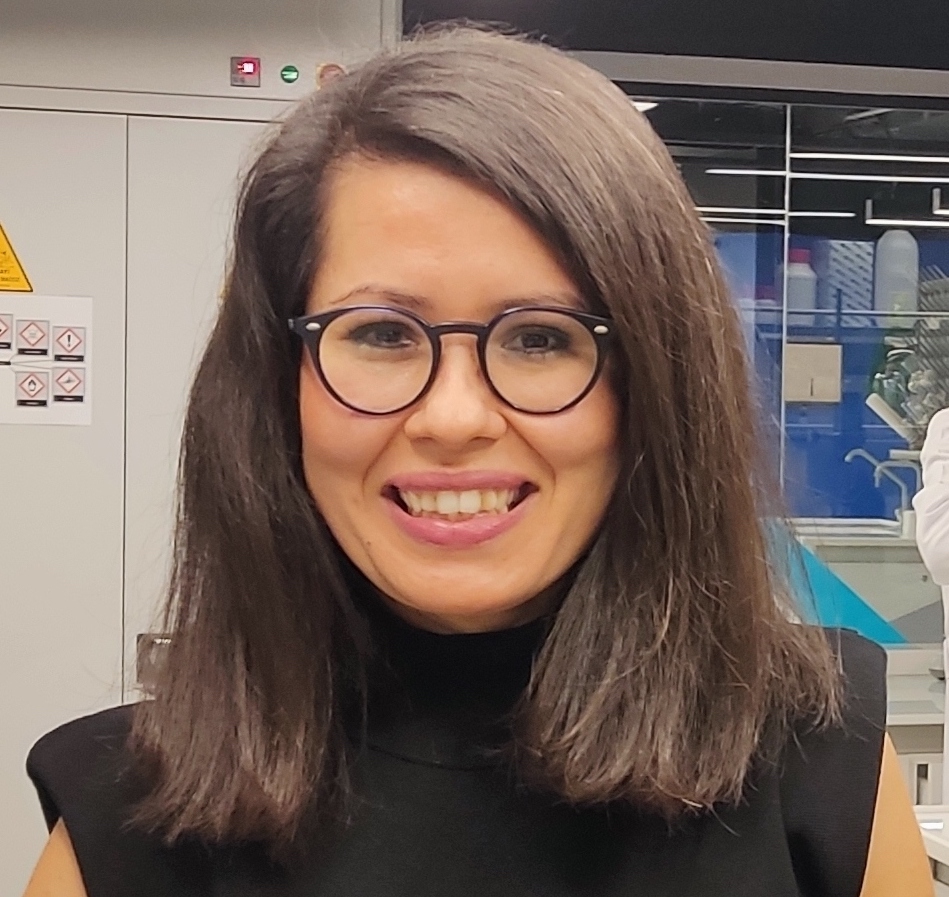
Ayca Bal Ozturk is an Associate Professor at Istinye University, Faculty of Pharmacy. She also holds a faculty appointment at Istinye University Research and Application Center for Stem Cell and Tissue Engineering (ISUKOK). She received his B.Sc., M.Sc., and Ph.D. degrees in Chemical Engineering from Istanbul University. Awarded with The Scientific and Technological Research Council of Turkey (TUBITAK) in 2016, she joined Harvard Medical School as a postdoctoral research fellow. She has received an outstanding faculty awards in 2019, 2020, 2021 and 2022 for her research, which has been given to only a few academic members at ISU. Ayca Bal Ozturk received the Young Scientist Award (BAGEP 2023) from Turkish Science Academy in 2023. Ayca Bal Ozturk, who is also a member of Biomaterials and Tissue Engineering Society (BTES). She has published over 60 papers with over 1100 citations (H-index 19). She has also presented her work to present at over 50 international/national conferences until today. She has hosted 12 projects as PI funded by TUBITAK and her university, and participated as co-PI in many projects from TUBITAK or other universities. Her research interests include mainly smart biomaterials (i.e., tissue adhesives), design and synthesis of innovative micro/nanoscale biomaterials as well as regulating stem-cell differentiation with the conclusive purpose of generating tissue-engineered organs, designing the next generation bio-nanoparticles for efficient targeted cancer therapy. She is the co-founder of AdBioink Biosystem Technology Inc., established in TUBITAK Marmara Technopark. AdBioInk is the first bioink company in Turkey, which focuses on developing photo-polymerizable biomaterials and bioinks to speed up tissue engineering studies.
Below are the publications she has authored in the field of tissue engineering:
1. Alarçin, E., İzbudak, B., Yüce Erarslan, E., Domingo, S., Tutar, R., Titi, K., ... & Bal‐Öztürk, A. (2023). Optimization of methacrylated gelatin/layered double hydroxides nanocomposite cell‐laden hydrogel bioinks with high printability for 3D extrusion bioprinting. Journal of Biomedical Materials Research Part A, 111(2), 209-223.
2. Yuce-Erarslan, E., Tutar, R., İzbudak, B., Alarçin, E., Kocaaga, B., Guner, F. S., ... & Bal-Ozturk, A. (2023). Photo-crosslinkable chitosan and gelatin-based nanohybrid bioinks for extrusion-based 3D-bioprinting. International Journal of Polymeric Materials and Polymeric Biomaterials, 72(1), 1-12.
3. Yilmaz‐Aykut, D., Torkay, G., Kasgoz, A., Shin, S. R., Bal‐Ozturk, A., & Deligoz, H. (2023). Injectable and self‐healing dual crosslinked gelatin/kappa‐carrageenan methacryloyl hybrid hydrogels via host‐guest supramolecular interaction for wound healing. Journal of Biomedical Materials Research Part B: Applied Biomaterials.
4. Yüce‐Erarslan, E., İzbudak, B., Kızılkurtlu, A. A., Topal, M., Akpek, A., & Bal‐Öztürk, A. (2023). Eggshell integrated GelMA/CSMA/HyMA hybrid hydrogels for cell therapy/tissue engineering. Journal of Applied Polymer Science, 140(34), e54310.
5. Tutar, R., Yüce-Erarslan, E., İzbudak, B., & Bal-Öztürk, A. (2022). Photocurable silk fibroin-based tissue sealants with enhanced adhesive properties for the treatment of corneal perforations. Journal of Materials Chemistry B, 10(15), 2912-2925.
6. İzbudak, B., & Bal-Öztürk, A. (2022). The effect of LDHs nanoparticles on the cellular behavior of stem cell-laden 3D-bioprinted scaffold. Journal of Biomaterials Applications, 37(1), 48-54.
7. Willemen, N. G., Hassan, S., Gurian, M., Jasso‐Salazar, M. F., Fan, K., Wang, H., ... & Shin, S. R. (2022). Enzyme‐Mediated Alleviation of Peroxide Toxicity in Self‐Oxygenating Biomaterials. Advanced healthcare materials, 11(13), 2102697.
8. Alarcin, E., Bal-Öztürk, A., Avci, H., Ghorbanpoor, H., Dogan Guzel, F., Akpek, A., ... & Avci-Adali, M. (2021). Current strategies for the regeneration of skeletal muscle tissue. International journal of molecular sciences, 22(11), 5929.
9. Izbudak, B., Cecen, B., Anaya, I., Miri, A. K., Bal-Ozturk, A., & Karaoz, E. (2021). Layered double hydroxide-based nanocomposite scaffolds in tissue engineering applications. RSC advances, 11(48), 30237-30252.
10. Seo, J., Shin, J. Y., Leijten, J., Jeon, O., Bal Öztürk, A., Rouwkema, J., ... & Khademhosseini, A. (2018). Interconnectable dynamic compression bioreactors for combinatorial screening of cell mechanobiology in three dimensions. ACS applied materials & interfaces, 10(16), 13293-13303.

I am a seasoned, forward-thinking, and highly skilled project manager and consultant with broad experience in several areas of pharmaceutical development. I was originally trained as an immunologist in preclinical and clinical investigations in different disease areas including infectious diseases, autoimmune diseases, and osteoarthritis. Following my post-doctoral fellowship, I gained several years of industry experience with pharmaceutical companies such as GlaxoWellcome/GSK, Bayer, MerckSerono/Merck KGaA, where I was primarily involved inresearch,in-licensing/due-diligence activities, leading teams on strategy generation; I also represented the companies in national and international consortia, and outsourced activities for validation and qualification of biomarkers.
My clinical research experience focus over the lastmore thentwo decades has been on the development of therapies in immunology, rheumatology, and especially osteoarthritis, with particular interest in personalized medicine and stratification approaches in clinical development, using biomarkers and imaging techniques. I have been involved in several patents and publications on this topic and continue to seek out opportunities that require development of clinical strategies in these areas.
Disease and Illness in OA: netwOArk and building the European Society of OA (EUSOA)
Abstract: Osteoarthritis is one of the most leading causes for disability. E.g. > 600 million people are suffering from knee OA. Despite this high incidence no effective disease-modifying treatment is available. One of the reasons is, that most of the investigated therapies are using a „one-fits-all“ approach, namely not looking in the individual patient pheno- and endotype. The disease AND illness should be taken into account when treating a patient. Already in 1978, Cassell described illness as: ‘what the patient feels when he goes to the doctor’, and disease as: ‘what he has on the way home from the doctor’s office’. In short, disease is something an organ has, as defined by modern medicine, and illness is something a person has. Although illness and disease usually coexist, disease may occur in the absence of illness and vice versa. A patient centricity leading to more personalized medicine is mostly missing and not always addressed, but would help to develop effective therappies. netwOArk was created due to a grant from COST to bring the OA patient in the center of research and investigations. With this approach disease and illness are addressed. The final result would be the creation of the European Society of OA (EUSOA) with large involvement of patients in research and therapeutic approaches. The current netwOArk spans all over Europe and has already created a lot of interactions. This will be further extended through business meetings, workshops and short term scientific mission funded by the COST action.

Prof. Dr. Meltem Avci-Adali studied Biomedical Engineering and Pharmaceutical Technology and obtained her Ph.D. in biology from the University of Tübingen. Currently, she is the Research Laboratory Director at the Department of Thoracic and Cardiovascular Surgery at the University Hospital Tübingen, Germany. She has published numerous papers in reputed journals and has extensive research experience in the fields of synthetic mRNA, aptamers, implant surface functionalization, endothelialization, hemocompatibility, and tissue engineering.
Synthetic mRNA-based approaches for tissue regeneration – Application potential for the treatment of osteoarthritis
Abstract: In recent years, the prominence of synthetic messenger RNAs (mRNAs) has grown significantly, marking them as pivotal players in the field of innovative treatments for both disease prevention and therapeutic interventions. The unique ability of synthetic mRNAs to transiently express desired proteins, particularly those that are missing or defective, positions them at the forefront of cutting-edge medical advancements. Synthetic mRNAs can be applied to generate footprint-free induced pluripotent stem cells (iPSCs), which enable the generation of autologous cells for personalized cell therapies. In addition, synthetic mRNAs find application in the production of secretable proteins, the expression of receptors on cell surfaces, and the facilitation of gene correction processes. In the field of osteoarthritis, synthetic mRNAs have also been applied to prevent apoptosis, to stimulate proliferation and ECM homeostasis. This versatility of synthetic mRNAs underscores not only their importance in addressing diverse medical challenges but also their potential to revolutionize treatment approaches for a wide range of diseases and conditions, including osteoarthritis.

Aşkın Nasırcılar was graduated from Hacettepe University Faculty of Medicine in 2003 and received Physical Medicine and Rehabilitation specialty degree from Uludag University Faculty of Medicine in 2009. He is working full time in his private clinic in Bursa and performs interventional procedures related to musculoskeletal system. He conducts several clinical trials on the safety and efficacy of umblical cord-derived mesenchymal stem cells in Rheumatoid Arthritis and adipose-derived stromal vascular fraction in osteoarthritis treatment.
Efficacy of stem cell-rich SVF - stromal vascular fraction fluid in treating osteoarthritis
Abstract: Osteoarthritis (OA) is the most prevalent joint disease in the world. There is no effective or curative treatment of disease progression. Stem cell-based therapies have emerged as possible disease-modifying treatments. Recently, mesenchymal stem cell-rich stromal vascular fraction (SVF) has gained popularity due to its easy availability from subcutaneous fat tissue and fewer legal restrictions. There are either mechanic or enzymatic ways to obtain SVF fluid. Mechanically obtained SVF fluid may called as Micronized / Microfragmanted adipose tissue - SVFs (MAT-SVFs) in the literature. Multiple studies have supported intraarticular injections of both mechanically and enzymatically obtained SVF for OA. This presentation will cover impacts of SVFs on OA as well as limitations and regulatory challenges.
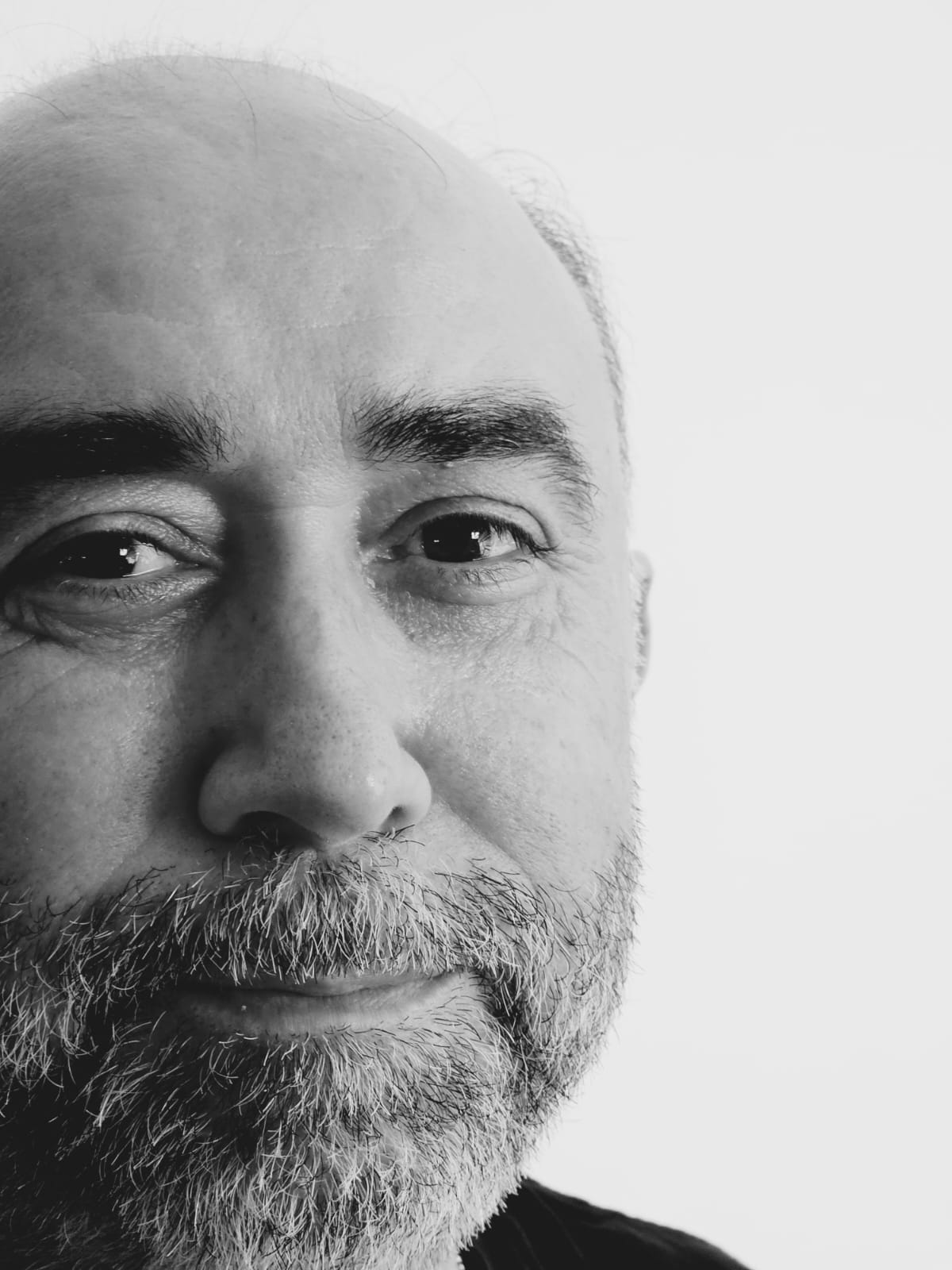
Prof. H. Eray COPCU, MD is generally, recognized as a leading plastic surgeon in Izmir, Turkey. Dr. Copcu, is throughly qualified and experienced in not only Aesthetic- Plastic surgery but also in stem/stromal cell treatments and technologies. Dr. Copcu, after becoming a professor in 2011, he has concentrated his works on stem cell and regenerative treatments and technologies. He was the first academic person to establish Regenerative Medicine Department in Universities in Turkey. He developed and patented MEST (MEchanical SVF Transfer), ARAT (Adjustable Regenerative Adipose Transfer), Supercharged stromal-cell and PvRP (Platelet very Reach Plasma) techniques and protocols with his studies for the last 10 years in Turkey and South Korea.
As a dedicated educator and professional public speaker, he has presented numerous of national and international meetings, ha has also appeared on several television and radio stations.
Professor H. Eray COPCU is founder and former Head of Deaprtment of Plastic, Reconstructive and Aesthtetic Surgery, in Medical Faculties of Adnan Menderes University and Izmir University, in Turkey. Also, he is former Vice Dean of Medical Faculty of Adnan Menderes University and Head of Surgical Disciplines and Senator in Medical Faculty of Izmir University. Also, he was the first founder of Regenerative Medicine Department in Turkish Universities.
His specific teaching and research interests are in the areas of aesthetic and reconstructive breast surgery, cell therapy, stem cell and preadipocytes. He has patents in stromal cell transfer techniques and treatments. He has owner of unique techniques as MEST (Mechanical Stromal-cell Transfer), ARAT (Adjustable Regenerative Adipose-tissue Transfer) in regenerative medicine and COPCU’s (Conical Plicated Central U-Shaped) mammaplasty in Aesthetic Plastic Surgery. He has also published more than 60 refereed articles in international journals many proceedings, and contributed extensively to international books written in English. He is editor in chief in Internet Journal of Plastic Surgery and member of editorial boards of many international journals.He is Turkish Senator of ISPRES ( International Society of Plastic Regenerative Surgeons)
Professor Copcu completed his MD degree in Ege University, Turkey in 1992; his residency programme in Plastic, Reconstructive and Aesthetic Surgery, in Izmir Atatürk Teaching Hospital in 1999, and his Assistant and Associate Professor degrees at Adnan Menderes University, Turkey between 2000-2006. Throughout his career he has been visiting Professor to a number of international universities, including Pittsburgh and Cincinnati University US, University of Edinburgh, University of Leeds in UK ,University of Montreal in Canada and University of Tokyo in Japan.
He is member and National Delegate of ISPRES (International Scoiety of Plastic and Regenerative Surgeons) and also member of ASAP, ISAPS, IFATS and TPRECD.
Dr. Copcu presented his own developed and patented techniques and mechanical stromal cell treatments in more than 50 international meetings in the last two years.
Obtaining stromal cells from adipose tissue (TOST) with the ultra-sharp blade system and long-term results of orthopedic applications.
Abstract: Regenerative medicine stands at the forefront of medical advancements, emerging as a promising branch with substantial developments, particularly after post-COVID-19 pandemic. This transformative period extends beyond healthcare, influencing sectors like energy and nutrition. Notably, the medical field has witnessed a paradigm shift from conventional pharmaceuticals to innovative cell-ceuticals, harnessing the inherent regenerative capabilities within an individual.
Our bodies comprise parenchymal and stromal cells, with stromal cells playing a pivotal role in regenerative practices. These cells, responsible for repairing damage caused by various factors, are integral to the evolving landscape of regenerative medicine and surgery. Among the various tissues housing stromal cells, adipose tissue boasts the highest concentration and diversity.
This abstract explores the methods employed to liberate and obtain stromal cells, focusing on the advantages of the ultra-sharp blade system. Direct methods involve enzymatic processes, demanding a controlled environment adhering to cGMP and cGLP standards, and costly equipment. Conversely, ultra-sharp blade systems offer a cost-effective, rapid, and straightforward approach, operating within minimal manipulation limits and complying with regulatory standards set by institutions such as the FDA and EMA.
The ultra-sharp blade system not only yields a higher quantity of cells but, crucially, preserves the extracellular matrix (ECM). The ECM serves as a conductor directing regenerative orchestration, proving essential in various regenerative applications. Its role in providing a cellular microenvironment for tissue engineering and disease treatment underscores its significance. The neutral, biocompatible, degradable, and controllable nature of ECM makes it an ideal biomaterial for mimicking cellular microenvironments.
In challenging clinical scenarios, such as cartilage healing, the ultra-sharp blade system becomes indispensable. This method ensures the protection of ECM and the maximum extraction of cells, making it particularly advantageous in orthopedic regenerative applications. By elucidating the merits of this approach, we aim to contribute to the optimization of regenerative procedures, fostering advancements in medical science and patient care.
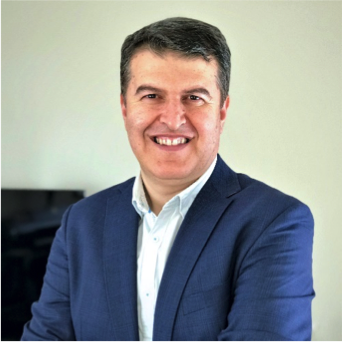
Bahattin Koc is Full Professor of Manufacturing and Industrial Engineering at the Sabancı University (SU). He received his Ph.D. and M.S. degrees in Industrial Engineering (Manufacturing) from North Carolina State University in 2001 and 1997 respectively. He was an Associate Professor (Tenured) of Industrial and Systems Engineering at the University at Buffalo (UB) before joining to Sabancı University in 2010. Dr. Koc is a founding member and was the Program Coordinator (Chair) of the ManufacturingEngineering Program at Sabancı University. He was the director of Sabancı University Integrated Manufacturing Center and also 3D Bioprinting Lab at Sabancı University Nanotechnology Research and Application Center. Dr. Koc’s research interests include three dimensional (3D) Bioprinting, computational biomodelling and biofabrication, additive manufacturing, heterogeneous object modeling and nano/micro-scale modeling and manufacturing. He has published his research results in over 115 scientific papers. He holds threepatents/patent applications related to bioprinting/tissue engineering. Dr. Koc’s research work has been recognized by several international and national awards. Dr. Koc is the recipient of Elginkan Foundation Science and Technology Award, Turkish Heart Association Award, Marie Curie Career Integration Award by EU Research Agency, Most Cited Author in Computer Aided Design Journal Award from Elsevier, University at Buffalo (UB) STOR Inventor Award, UB Reifler Award and UB Interdisciplinary Research and Development Award and more. As PI/Co-PI, Dr. Koc received funding ofmore than $20 million for his research work. His research work has been supportedby major national and international research agencies and organizations such as the Scientific and Technological Research Council of Turkey, the European Union the European Research Council , andthe DoD U.S. Army Medical Research.
3D Bioprinting for Tissue/Organ Engineering
Abstract:
Bioprinting is a relatively new tissue/organ engineering method that involves printing living cells, with or without biomaterials, layer by layer to create three-dimensional living structures. Unlike other tissue engineering approaches, this method fabricates complex biological structures using only live cells, biomolecules, and biomaterials. This presentation will discuss biomimetic 3D bioprinting, bioprinters, and bioinks for tissue and organ engineering. The bioprinting process, including how to digitally copy and design tissue and organs, how to prepare bioinks, bioprinting instructions, and how to print live cells, will be explained. The presentation will also cover several applications and challenges in organ printing.
EDUCATION
| University | Faculty/ Department | Dates | Fields of Study | |
| Undergraduate | Dokuz Eylul University | Faculty of Medicine | 1983-1989 | Medicine |
| PhD | University of Liverpool | Human anatomy and Cell Biology | 1994-1998 | Stem cells, transgenic cell line and animals, basement membrane |
|
Dates |
Fields of Study |
|
|
Assistant Professor |
1998-2004 |
Cancer types and treatment, stem cell, cell death, infertility, personalized cancer therapy |
|
Associate Professor |
2004-2011 |
Cancer types and treatment, stem cell, cell death, infertility, personalized cancer therapy, molecular pathway of cancer and stem cells |
|
Professor |
2011-Still |
Cancer types and treatment, stem cell, cell death, infertility, personalized cancer therapy, metastasis, molecular pathway of cancer and stem cells, biodegradable scaffold, 3D printing, exsosomal analyses, |
MEMBERSHIPS AND AFFILIATIONS
|
Turkish Society for Electron Microscopy |
1999 – Still |
|
Turkish Society for Histology and Embryology |
1999 – Still |
|
Neuroscience Society of Turkey |
2000 – Still |
|
Cell Death Research Society (General Manager) |
2010 – Still |
|
Member of Research Foundation Center, Manisa Celal Bayar University |
2014 – 2018 |
|
Executive Committee Member of Research Center of Experimental Health Science, Near East University, North Cyprus |
2015 – 2017 |
|
Vice Present of Research Institute of Experimental Health Science, Near East University, North Cyprus |
2016 – 2018 |
|
Coordinator of Research Foundation Center, Near East University, North Cyprus |
2018 – Still |
|
Head of Dep. Of Histology-Embryology, Faculty of Medicine, Manisa Celal Bayar University |
2016 – Still |
Title of PhD Thesis: Analysis of Basement Membrane Regulation and Deposition During Early Mouse Development In Vivo and In Vitro
Thesis Advisor: Prof. David Edgar (University of Liverpool, Department of Human Anatomy and Cell Biology, Liverpool, UK)
Areas of Interest: Cancer biology and treatment (especially, colon, breast, bladder, prostate etc.) cancer primary cell culture techniques, cancer stem cells, metastasis, epithelial mesenyhmal transition, experimental animal models (cancer, cirrhosis, MS stroke, wound healing) embryonic development, implantation biology, cell culture and properties, culture of stem cells and differentiation, stem cells (both mouse and human embryonic, mesenchymal, dental, adipogenic, etc), 3D culture condition, 3D printing, cell death, oocyte culture, infertility, histochemistry, immunohistochemistry, immunofleurosence, western blotting, in situ hybridization, in situ PCR, miRNA analyses, SDS-PAGE electrophoresis, immunoprecipitation, flow cytometry
THE ROLE OF TISSUE ENGINEERING IN OSTEOARTHRITIS
Abstract: Osteoarthritis (OA) is defined as a whole joint disease and is characterized by cartilage destruction, subchondral bone change, osteophyte formation, and alterations of ligaments and meniscuses affects the quality of life of more than 300 million people worldwide.
While significant progress has been made in defining the pathological mechanism of OA, current therapeutic approaches, including surgical interventions and pharmaceutical treatments, are palliative but not curative. Non-pharmacological therapies are used for patients in the early stages of OA to delay its development. However, the effects of these approaches on early symptoms are limited. Thus, it is necessary to develop new therapeutic strategies using tissue engineering techniques with or without cells.
Both biomaterials and stem cells including mesenchymal and induced pluripotent stem cells can provide a good source for tissue engineering. These two type of stem cells can be obtain as autologous which is important advantages for cellular therapy. Mesenchymal stem cells can be differentiating under suitable culture condition to other type of cells such as osteoblast, chondroblast etc. The mechanism by which adipose tissue mesenchymal stem cells induce cartilage regeneration remains unclear. Secreted proteins, microvesicules or exsomes form stem cells are also detected. Therefore, rather than stem cells, the products secreted by stem cells may be alternate direction for OA treatment.
Because of regulating of local microenvironment through paracrine nutritional factors and control of immune regulation during OA, it should be main aim for regeneration and repair and subsequently delaying cartilage degradation and improving joint function. Therefore, future studies on stem cells or their secreted products aim for therapeutic mechanisms in OA.
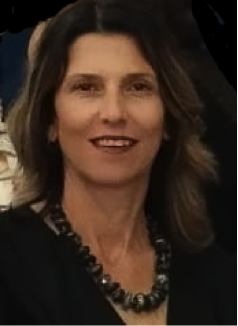
Ozlem Yesil-Celiktas is a Chemical Engineer from Ankara University, with an M.Sc from Chalmers University of Technology in Sweden and a PhD in Biotechnology from Ege University, Izmir. She has six years of industrial experience with international secondments in Munich, Stockholm and Wageningen. Prof. Dr. Yesil-Celiktas is working as a faculty member at the Bioengineering Department, Ege University since October, 2007. She had been a visiting Assoc. Prof. Dr. at Brigham and Women’s Hospital, Harvard Medical School in 2017. Currently, she leads Biomimetic Microsystems research group, which applies a multidisciplinary approach to design and develop organ-on-chip platforms that enable to elucidate cellular and molecular mechanisms governing tissue pathology or offering protection during injury. Her research lies at the intersection of neuronal and pulmonary diseases, immuno-microbiology, tissue engineering, and biomaterials. Ultimately, her goal is to discover novel drug targets and personalized diagnostics using microengineered systems that recapitulate complex human organ pathophysiology in vitro. She thrives to positively impact human health and our society through discoveries.
Can microfluidics-enabled platforms expedite the assessment of immune response towards implantable biomaterials for the knee?
Abstract: The immune response to the biomaterial in the patient's body after implantation may shorten the functional life of the implantable biomaterials depending on the degree of the response and adversely affect the quality of life. Therefore, understanding the immune response and designing strategies to modulate such a response represent a grand challenge for implantable devices and biomaterials. By developing 3D in vitro models, the M1/M2 macrophage ratios, pro-inflammatory and anti-inflammatory cytokine amounts can be determined to evaluate the immune response to the implantable biomaterials before clinical use. Here, the development of a microfluidic platform is reported for modeling the cascade of events during immune cell response to implants. The platform models the native implant microenvironment where the implants are interfaced directly with surrounding tissues, as well as vasculature with circulating immune cells. The materials representing the implant is located at the bottom layer. The responses towards titanium beads and various hydrogels that we have previously studied such as polyacrylamide-alginate (PAAm-Alg) hydrogel, which has been previously characterized as a biocompatible material and shown to enhance regeneration of cartilage in vivo, along with a graphite enhanced hydrogel (PAAm-Alg-G) as a non-biocompatible counterpart, to evaluate macrophage attachment and polarization to pro- or anti-inflammatory phenotypes are discussed. The study demonstrates that the release of cytokines such as monocyte chemoattractant protein 1 from the extracellular matrix-like hydrogels in the bottom tissue chamber induces trans-endothelial migration of circulating monocytes in the vascular channel toward the hydrogels, thus mimicking implant-induced inflammation. Predicting immune responses by developing an alternative 3D in vitro model provides various advantages such as increasing the success of treatment, thereby well-being of the patient and reducing the associated costs burdening the healthcare system.
Keywords: immune response; implantable biomaterials; articular cartilage; 3D in vitro model

Assoc. Prof. Dr. Pınar Çakır Hatır is currently working at İstinye University in the Department of Biomedical Engineering. She graduated from Boğaziçi University with B.Sc. degree in Chemistry in 2004. After that, she finished her M.Sc. programme at Bogazici University. During her M.Sc. she worked on the topic of “Synthesis of Dendrons with Bone Targeting Moieties”. She received her Ph.D. in Biotechnology from Sorbonne Universities, University of Technology of Compiègne, France in 2012. During her Ph.D. she worked on the topic of “Molecularly imprinted polymer nanostructures”. Additionally, she worked for the EU research networks IRMED and NASCENT as an early-stage researcher. She returned to Turkey after receiving her Ph.D. and spent over a year working as a project manager at Sampaş Nanotechnology, where she was involved in 5 FP7 projects (PCATDES, Mu-Tool, EFFESUS, Tex-Shield, S-Varnish). She has participated as a researcher and coordinator in various national and international research projects since 2013. Currently, she is conducting the TÜBİTAK 3501 project titled “Development of targeted nanocarriers for CRISPR/Cas9 system using renewable resources”. Recently, she completed an EuroNanoMed project under Horizon 2020 titled “Nanofabricated nanocomposite nanobioactive and nanofunctional replacements of tympanic membrane as advanced drug delivery and regenerative platforms (4NanoEARDRUM)”. She also serves as one of the two members of the management committees for the COST Actions CA16215, CA21121, and CA21164 and as the working group members for the COST Actions CA21113 and CA21145. She received MSCA Seal of Excellence Award for her proposal in 2019 (Score: 88.40%). Her research focuses on polymer biomaterials, nanomedicine, molecular imprinting, functional polymers, smart hydrogels, drug delivery systems, micro/nanostructured materials for biomedical applications.
Nanoparticular Delivery Systems for Osteoarthritis Therapy
This abstract provides a comprehensive overview of the evolving landscape of nanoparticle-based drug delivery systems for osteoarthritis therapy. Osteoarthritis, the most common degenerative disorder of the whole joint, affects more than half of people over 65, which is associated with significant inflammation, cartilage degeneration, and joint pain [1,2]. Changes in chondrocyte structure and an irreversible loss of extracellular matrix are characteristics of osteoarthritis, which frequently results in biomechanical failure [3]. Drug therapy for disorders involving orthopedic tissues is often complicated by the anatomic structure of these tissues. For instance, drugs injected directly into intra-articular joint space clear out rapidly providing only short-term benefit [4]. Therefore, the need for targeted drug delivery to the affected joints is arisen. Nanoparticles offer a promising avenue for overcoming these challenges, providing precise control over drug release, improved bioavailability, and enhanced therapeutic efficacy.
The talk will cover drug delivery systems with various nanoparticle formulations, including liposomes, polymeric nanoparticles, and micelles, highlighting their unique attributes for encapsulating diverse therapeutic agents for the treatment of osteoarthritis and the translational potential of these delivery systems.
References
1. Barbour, K. E., et al. (2017). Vital signs: prevalence of doctor-diagnosed arthritis and arthritis-attributable activity limitation—United States, 2013–2015. Morbidity and Mortality Weekly Report, 66(9), 246.
2. Mao, L., et al. (2021). Targeted treatment for osteoarthritis: drugs and delivery system. Drug Delivery, 28(1), 1861-1876.
3. Peffers, Mandy J., et al. (2020). SnoRNA signatures in cartilage ageing and osteoarthritis. Scientific reports, 10(1), 10641.
4. Mehta, S., He, T., et al. (2021). Recent advances in targeted drug delivery for treatment of osteoarthritis. Current opinion in rheumatology, 33(1), 94.

Valentina Basoli is senior scientist and lecturer at the Department of Biomedical Engineering at the University of Basel. Her main interests are focused on regenerative medicine in musculoskeletal regenerative orthopaedics in the direction of translational medicine and patient care. Her primary work is based on translating basic science to proof of concepts of new technologies that can be used in biomedical labs and in-patient care for personalized medicine, such as tissue engineering and biosensors.
Title: Prospective in regenerative medicine and biosensor: when biology meets technology
Abstract: Regenerative medicine aims to restore damaged or diseased tissues through tissue engineering strategies. These strategies involve the creation of tissue constructs that mimic the native tissue architecture and possess the ability to integrate seamlessly with the host tissue. However, ensuring the quality and functionality of these tissue engineering constructs remains a critical challenge.
Monitoring the physiological conditions within tissue engineering constructs is essential for successful tissue regeneration. Biosensors can detect deviations from optimal conditions, such as inadequate oxygen supply or accumulation of harmful metabolites. This real-time feedback allows researchers and clinicians to make timely interventions and adjustments to optimize construct development and improve tissue regeneration outcomes.
During the talk will be discussed the state the art in regenerative medicine, cartilage biology and osteoarthric model development and the future integration of biosensors for monitoring analytes, focusing on the best biological model for the test of nanoparticles for new therapies, scaffold development and use of emerging technology for real-time monitoring of physiological cell behavior.
The integration of biosensors in regenerative medicine has the potential to revolutionize the field of orthopedics. Indeed, sensor technology can offer a means to bridge the gap between conventional tissue engineering techniques and clinical success by providing continuous monitoring and feedback on the quality and performance of tissue constructs. The seminar will discuss applying the best sensing solutions, such as electrochemical biosensors or optical biosensors based on single-wall carbon nanotubes directly in the engineered construct and possible patient application.
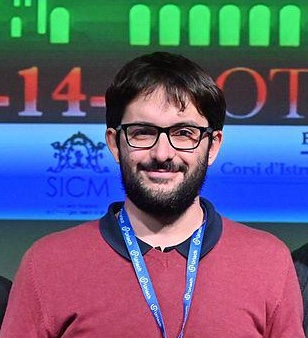
Born in Turin, Italy, in 1992. I perfected my initial studies in Medicine and Surgery at the University of Turin Medical School. Then, I joined the University of Genoa Orthopaedics and Traumatology department for my 5-years Residency. For about a year now I have been working with Professor Riccardo Ferracini on several research topics in Hip/Knee OA treatment, specifically with adipose tissue-derived Stem Cells (ADSCs).
Current Situation of Adipose-Derived Stem Cells Treatments for Knee Osteoarthritis
Abstract: In a treatment panorama for Knee OA dominated, for the last 40 years, by TKA and other prosthetic joint replacements, the possibilities offered by Regenerative Medicine and MSCs have shifted the Surgeons’ mindset to a more conservative one. My presentation will explore the possibilities offered in scientific literature by MSCs and ADSCs in OA and Knee OA, specifically. It will also cover several aspects of the treatment protocol we follow as a team in Turin, Italy.

Hakan DARICI started his undergraduate education in Biology Department at Süleyman Demirel University in 2000. In 2004, he started his master's degree in the Department of Histology and Embryology, Faculty of Medicine. In the same year, he became the youngest Research Assistant of the university. During his Master's Degree, he conducted research on germ cells. Started his PhD education in 2007, focused his research to pluripotent stem cells and received a scholarship from Singapore Stem Cell Association with his studies. Immediately after completing his doctoral education, he worked as an assistant professor at the Department of Histology and Embryology at SANKO University as one of the 12 founding faculty members. In 2016, he participated the foundation of Istinye University, and establishment of the university's student and research laboratories. In addition to the courses in the Histology and Embryology department, which examines all tissues in the human body and their development from the embryonic period. He has been teaching Turkish and English in areas such as Future Medicine, 3D Tissue Engineering and artificial intelligence, along with histology and embryology lessons since 2015. Hakan DARICI, is a member of the various foundations such as Stem Cell and Cellular Therapies Association, Turkish Histology and Embryology Association, Singapore Stem Cell Society, European Association of Cancer Research. He is fluent in English and beginner in Chinese and Spanish. Hakan DARICI has worked in the establishment of Stem Cell and Tissue Engineering Research and Application Center (İSÜKÖK) at Istinye University and still conducts many stem cell associated projects in this center and provides both national and national training for students. Hakan DARICI has also been the founder and executive of the Istinye University 3D Design and Prototyping Research and Application Center (İSÜ3D) since 2017. The studies carried out at the center are focused on 3D printers, 3D bioprinters, biocompatible polymers, tissue scaffolds, and tissues such as artificial skin, bone, cartilage, artificial organs and biomechanical human limbs. He is also the founder of CEO at HD Bioink Biotech. Corp since 2018, which is focused on 3D organ development. Hakan DARICI is currently working as an executive, researcher or consultant in many National and International projects and attends more than ten congresses and symposiums as invited speaker every year.
Research Areas: Stem Cells, Tissue Engineering, 3D Bioprinting, Transhumanism, Artificial Intelligence Applications In Sciences and Medicine, Cellular therapy
Histology and Stem Cells of Cartilage and Bone
Abstract: Cartilage and bone are two connective tissue subtypes with fibers, ground substance and cells. Cartilage is made of mostly type-II collagen while bone is abundant with type-I collagen and additional inorganic components such as hydroxyapatite crystals. Both tissues have active, extracellular matrix (ECM) producing cells blast cells as chondroblasts and osteoblasts, and their mature, metabolically less active forms as chondrocytes and osteocytes. Although both tissues originate from mesoderm and can regenerate from mesenchymal stem cells (MSCs) throughout the life, bone tissue have an additional progenitor cell between MSCs and osteoblast cells.
MSCs can differentiate both osteoprogenitor cells or chondrocytes easily during developmental period or during regeneration in adult life. Growth and regeneration of the cartilage happens from both inside and from periphery while bone can grow only from peripheral layers called periosteum or endosteum. Lengthening of the bone is more complicated and requires sequential growth differentiation and death of cartilage cells and replacement with bone progenitors in the areas of long bones called epiphyseal plates. Articular cartilage regeneration is different than regular cartilage growth and resembles the epiphyseal plate where new cartilage cells constantly produced and sent upwards to renew deformed articular surface. Diseases such as osteoarthritis develops when this regeneration slows down and the stem cell supply of the cartilage is not enough to counter the demand on the surface. Over time with the progress of the disease, eroding articular surface reaches the bottom stem cell layer and finally destroys the final defenses of the articles till no cartilage is left and only bone remains, which causes movement disabilities and too much pain in the patients.

Dr. Girish Pattappa is a senior postdoctoral research scientist in the Laboratory of Experimental Trauma Surgery, Department of Trauma Surgery, University Hospital Regensburg, Germany. His obtained his PhD in cell and tissue engineering in 2010 from the Department of Engineering at Queen Mary University of London and then started his postdoctoral career at the AO research Institute in Davos (Switzerland) before subsequently working in University of Alberta (Canada) and University of Nantes (France) prior to starting his current position in Regensburg in 2016. His current research and main focusses are on cell-based therapeutic strategies for articular cartilage and meniscus to prevent the onset of osteoarthritis. This work has involved using evaluating different cell types (i.e. bone marrow mesenchymal stromal cells, chondrocytes, meniscus progenitor cells) under various environmental stimuli (e.g. hypoxia, mechanical loading), understanding their cellular response and applying therapies in preclinical animal models. He has been involved in both German and EU projects for cartilage (ExCarBon) and meniscus (MEFISTO, EU number: 814444). He has over 25 publications and is an active member and participant in orthopaedic societies (e.g. ORS, EORS), including being the social media chair for the EORS. He is a management committee member for Germany for the NetwOArk COST action.
Structure and function of Articular Cartilage
Abstract: Articular cartilage is a tissue that lines the bones of synovial joints to help reduce contact stresses on the underlying bone and enabling smooth joint motion. Injury to the articular cartilage due to trauma or sports activities can result in cartilage lesions that lead to the onset of early osteoarthritis (OA). Due to the fact that it is an avascular and aneural tissue, natural repair mechanisms creates fibrocartilage that is structurally different to articular cartilage. Thus, with time, the tissue further degrades and this leads to exposure of the underlying subchondral bone that causes pain for the patient. Patients at late stage OA can have total knee replacement (TKR) to restore joint motion. However, interventions at the earliest stages of OA development, particularly treatment of focal cartilage lesion, could provide long-term benefits for the patient and ease healthcare burdens.
Thus, to create solutions for regenerating articular cartilage, an understanding of the development, structure and function of the tissue is required. This presentation will outline the embryology of articular cartilage, the structure and matrix components within the tissue and then how post-injury and with time, this develops into OA. The seminar will then describe how cellular-based therapies (e.g. chondrocytes or mesenchymal stromal cells) can prevent OA at early stages and potentially regenerate articular cartilage utilising environmental stimuli to optimise their performance and how potential drug therapies can be developed in the future.

Dr Luminita Labusca is a medical doctor, consultant in orthopedics and traumatology, master in Educational Sciences and PhD in regenerative medicine. Dr Labusca is an active orthopedic consultant involved in developing regenerative therapies for musculoskeletal applications, and scientist actively contributing to basic science and transaltional research in the fiel of stem cells, nanobiomaterials and nanosensors for biomedical applications.
Dr Labusca authored publications in peer reviewed journals as well as books in the field of orthopedics, medical ethics, stem cell biology, regenerative medicine, editted special issue of international peer reviewed journal on the topic of advanced technologies for orthopedic research.
Dr Labusca is a founding member of REGENERO, Romanian medicine association whose major goals is to facilitate professional and patient education in the field of regenerative medicine science and practice, to contribute to basic and clinical research in the field to establish worldwide collaboration with similar organizations and professional boards.
STEM CELLS IN (REGENERATIVE) ORTHOPEDICS - Between Basic Science And Clinical Practice in Orthopedic Surgey
Abstract : The talk will provide basic notion regarding stem cell definition, function, currently accepted clasification, stem cell types and their importance for the rising field of regenerative medicine. The use of stem cell in regenerative medicine will be briefly introduced. The two major modalities of accesing stem cell use in clinical practice- third generation orthobiologics and stem cell based advanced medicinal products will beintroduced.. The principal currently used tissue sources of stem cells in orthopedic and access modalities s will be presented together with their particularities and modalities of use. Several general considerations and reccomandation for the use of orthobiologics will be provided.
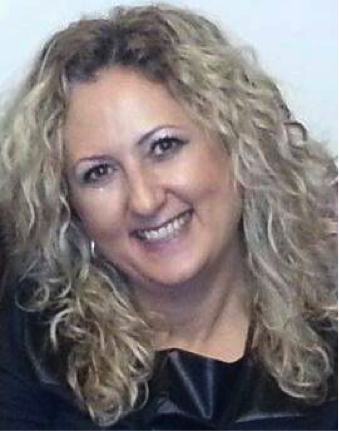
Onur Uysal completed her university education in Hacettepe University, Faculty of Science, Department of Biology and completed her PhD in Eskişehir Osmangazi University Health Sciences Institute Histology and Embryology Department. In 2014, she was among the founders of Eskişehir Osmangazi University Cellular Treatment and Stem Cell Production Application and Research Center ESTEM and Health Sciences Institute, Stem Cell Department. She has worked as a director, researcher and consultant in many national projects such as TÜBİTAK, TÜSEB and University Research Projects. Dr. Uysal, whose fields of study are histopathology, immunohistochemistry, mesenchymal stem cell, continues her academic studies at the Cellular Treatment and Stem Cell Production Application and Research Center ESTEM, of which she is the founder.
Mesenchymal stem cell treatment for osteoarthritis
Abstract: Osteoarthritis (OA) is a degenerative joint disease that causes destruction of the chondrocytes through destructive inflammatory cytokines, metalloproteinases and mechanical stress which subsequently leads to joint space narrowing, inflammation of the synovial membrane, degeneration of ligaments, enlargement of the joint capsule, formation of osteophytes and subchondral cysts. OA is not an inactive degenerative disease; on the contrary, it is a dynamic disease caused by the imbalance between restoration and destruction of joints. Previously described as a consequence of aging, it is now established that many factors can induce OA, such as genetic predisposition, abnormal joint biomechanics, traumatic injury, load excess, repetitive joint use, overweight or abnormal bone density.
Because cartilage has a unique physiological structure of lacking neural and vascular tissue, its ability of self-repair is extremely limited. The primary treatment goals for OA are to reduce pain and slow or halt the disease’s progression. Numerous non-pharmacological and pharmacological treatments are currently utilized for the treatment of OA. Commonly used pharmacotherapies are acetaminophen, non-steroidal anti-inflammatory drugs, and opioid analgesics. Intra-articular injections of corticosteroids are also applied. Exercise, dietary advice, and weight loss are non-pharmacological treatments that can improve physical function and reduce pain as well as the progression of cartilage degeneration. Intra-articular injections of corticosteroids and hyaluronic acid in are commonly recommended for OA. However, these treatments can only transiently relieve OA symptoms and do not delay the progression of OA, and patients eventually must receive joint replacement. However, joint arthroplasty carries its own risks: substantially more invasive, infection, persistent pain, leg length discrepancy, and elevated costs. It also requires long post-operative rehabilitation, and may require revision if the surgery fails, or if the components wear out over time. Recent advancements in cell-based therapy offer new hope for the treatment of OA patients. Currently, autologous chondrocyte implantation (ACI) is the only cellular based therapy approved by Food and Drug Administration (FDA). However, currently, no therapy has been shown to protect articular cartilage, nor approved to prevent the progression of OA. Due to the complex pathology and its slow progression, and the lack of biomarkers for early diagnosis of OA, a challenge remains for researchers to develop efficient therapies to treat and modify OA.
Stem cell (SC) therapy is a turning point in for the treatment of OA in regenerative medicine. The principal objective of regenerative medicine is to repair defectives or aged tissues by preserving their morphology and native function. Mesenchymal stem cells (MSCs) are non-hematopoietic, multipotent, and adult stem cells that can be obtained from various tissues, such as bone marrow, adipose tissue, umbilical cord tissue, synovial membrane, and synovial fluid. Many studies have shown that MSCs have the biological characteristics of multi-directional differentiation, diverse plasticity, and low immunogenicity. MSCs can modulate local inflammation, cell apoptosis and proliferation, and participate in tissue repair, and can achieve certain effect of delaying degenerative changes when used in the treatment of OA. MSCs interact with immune cells and are responsible for the modulation of a number of effector functions, immunomodulatory properties, migratory abilities, the induction of peripheral tolerance, inhibiting the release of pro-inflammatory cytokines, and the promotion of tissue repair. The advantage of using MSCs for treating OA include their capacity to differentiate into chondrocytes and their potential to prevent chondrocyte apoptosis and to prevent the overall process of degeneration (through a paracrine effect). The paracrine effect of MSCs on the surrounding tissue reduces inflammatory responses and helps repair damaged cartilage. In conclusion, untreated OA will not heal spontaneously, and current standard treatments are very limited due to the lack of vascularization in the cartilage tissue. Due to their capacity for differentiation into chondrocytes and due to their immunomodulatory properties, MSCs have been the most extensively explored as new therapeutic agents in the cell based therapy of OA. MSCs are a good candidate to meet the challenge in treating OA. They can repair the damaged tissues or provide immunomodulatory function to reduce inflammation in OA. Since OA is a degenerative joint disease likely involving the depletion of endogenous MSCs, and adult MSCs have the potential to differentiate into cells of chondrogenic lineage, investigation into MSC-based therapy should be supported for potential articular cartilage repair and regeneration. Although the application of MSCs in joint repair is well established, it is particularly exciting about MSCs being used for OA treatment. Future challenges may include the efficient isolation and culture of MSCs from defined and reliable sources. MSCs made through good manufacturing practices must be carefully evaluated through a combination of means including biochemical, genetic, and epigenetic markers, as well as bioactive assays to establish the efficacy of cells, their proliferative activity, and reparative potentials before they can be used in humans. Furthermore, delivery systems for MSCs and evaluation of their safety and effectiveness also need to be investigated. It is hopeful that these studies can be accomplished in the near future and OA patients may receive much needed help soon. The mechanism of action of the stem cell, as well as its chondrogenic potential and immunomodulatory effects in the OA model, must be thoroughly investigated before a new treatment strategy can be implemented. Proper isolation, delivery and management of the stem cells isolated from the patient must be carefully evaluated to avoid immunological rejection and to make sure optimal number of the MSC is obtained. Furthermore, innovative methods using MSC and biomaterial construct for cartilage tissue engineering must be investigated to improve the chondrogenic potential and immunomodulatory properties of the system for OA treatment.

After graduating from medical school in 2010, he started his orthopedics and traumatology specialty training at Yeditepe University Hospital in 2017. After completing his graduation thesis on exosome treatments in cartilage damage, he started his PhD program on exosome treatments at Yeditepe University, Department of Biotechnology. After becoming an orthopedics and traumatology specialist in 2022, he works as a specialist at Istanbul Fatih Sultan Mehmet Training and Research Hospital.
Exosomes for Articular Cartilage Regeneration
ABSTRACT: Exosomes are small, membrane-bound vesicles that are released by cells into the extracellular space. They are a type of extracellular vesicle, ranging in size from about 30 to 150 nanometers in diameter. Exosomes contain various bioactive molecules, including proteins, lipids, and nucleic acids (such as RNA and DNA). These vesicles play a crucial role in intercellular communication, as they can be taken up by other cells, influencing their function and behavior. Exosomes are involved in various physiological processes and are implicated in disease progression, including cancer, neurodegenerative disorders, and inflammatory conditions
Many recent studies have confirmed that, in both physiological and pathological states, various cell types, including synovial fibroblasts and chondrocytes, secrete exosomes in the internal environment of the joint. This secretion reflects the pathological changes associated with joint diseases, offering a potential avenue for early diagnosis. Additionally, exosomes, rich in cargo components such as RNAs and proteins, play a crucial role in mediating intercellular communication and enhancing cellular function. This characteristic makes them promising candidates for novel therapeutics in treating joint diseases. Moreover, owing to their nanocharacteristics, low immunogenicity, and excellent biocompatibility, exosomes hold the potential to serve as carriers for targeted delivery of bioactive molecules or drugs.
As a signaling molecule involved in cellular interaction, exosomes can accelerate the progression of OA or promote articular cartilage repair. Specifically, exosomes secreted by therapeutic cells, especially MSCs, have been used to treat OA by transferring their bioactive substances to regulate the damaged tissue environment and coordinate the subsequent regenerative process. The mechanisms of exosomes for cartilage repair include mechanisms that regulate the immune response, inhibit chondrocyte apoptosis and matrix degradation, promote proliferation and chondrogenesis of stem cells in situ, as well as promote directional migration to a site of injury.
In addition, gene modification and tissue engineering can be used to modify exosomal secretion and contents and obtain more ideal therapeutic exosomes to increase their therapeutic efficacy. Tissue repair and regeneration has an exciting future in the treatment of osteoarthritis. The combination of gene therapy, stem cell therapy, and tissue engineering, as well as interdisciplinary collaboration between orthopedic surgeons, materials scientists, biomechanical engineers, and molecular biologists, is crucial to the future success of these technologies. The challenge will be to develop a reliable technology validated to treat the varying complexities of joint injuries and early degenerative lesions.
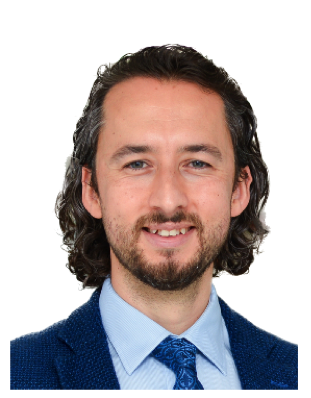
- Medical School: Ege University Medical School, Izmir, Turkey, 2004
- Residency: Dokuz Eylul University, Izmir, Turkey, 2010
- Current Position and Clinic: Professor, Head of the Department of Orthopaedic and Traumatology Yeditepe University Medical School, Istanbul, TURKEY
International Experiences and Summary of CV;
• Surgical observation on Shoulder and Knee Surgery at Scripps Clinic and Tri-City Hospital San Diego- USA in 2013.
•Research Fellow and Surgical Observation Scripps Clinic and Shiley Center San Diego, USA in 2014 and 2019 on cartilage surgery and cartilage transplantation.
•His main specialty is cartilage transplantation. He performed dozen successful cartilage transplantation and give many lectures about his treatment.
•He has over 40 scientific articles published in international and national scientific journals, over 50 international and national papers, authored chapters in many books, and edited scientific journals. He has contributed to many national and international meetings as a speaker.
•Since March 2017, he has been working as a faculty member at Yeditepe University Faculty of Medicine, Head of the Department of Orthopedics and Traumatology in Istanbul-Turkey.
Fresh Osteochondral Allograft Transplantation for Cartilage Defects
Abstract: Large and complex chondral lesions of the joints are common, and their treatments are challenging. Several surgical treatment options are described in the literature for chondral lesions. In case of failure of other surgical methods or patients with the massive osteochondral defect, fresh osteochondral allograft (OCA) has been used as a biological salvage treatment option for the joints. The principle of fresh OCA is the replacement of cartilage defects and subchondral bone with an osteochondral allograft transplant. This allogeneic osteochondral unit consists of mature hyaline cartilage with viable chondrocytes along with an underlying subchondral bone. In the literature, fresh OCA transplantation is described as a reliable treatment option for cartilage defects.

Prof. Şardaş, is the head of the Department of Pharmaceutical Toxicology, Istinye University, Faculty of Pharmacy. She was awarded the title of European Registered Toxicologist by the European Toxicology Association in 2011. Prof. Şardaş was involved as scientific advisory committee member and chairman of the various units of the Turkish Ministry of Health- Medicines and Medical Devices Agency (TİTCK) including pharmacovigilance, risk assessment, clinical trials and license department. During her scientific career, she had studies and projects on drug metabolism and clinical trials at University of London, Faculty of Medicine in England, supported by the Scientific and Technological Research Council of Turkey. She has many International and National publications, book chapters, citations, and awards for her scientific services to public health and has directed many master's and PhD theses. She is one of the founders of both Turkish Toxicology and Pharmacovigilance Societies in Turkey and continues her duty in Pharmacovigilance Society as the Vice President.
Safety of Drugs Used in Osteoarthritis
Abstract: Osteoarthritis (OA) is the most common musculoskeletal chronic progressive disorder of the synovial joints that is often age related and/or trauma induced. Existing treatments aim to reduce pain and symptoms, as well as improve joint functional capacity. Current pharmaceutical treatment for OA is largely restricted to analgesics including nonsteroidal anti-inflammatory drugs (NSAIDs), which are both palliative in nature and accompanied by adverse effects. The traditional medications can be categorized as; acetaminophen, non-steroidal anti-inflammatory drugs (NSAIDs), opioid analgesics, serotonin-norepinephrine reuptake inhibitors (SNRIs), intra-articular (IA) injections of corticosteroids, and dietary supplements. Although there are generally accepted guidelines for these traditional drugs, they need to be used with caution due to the growing concerns with adverse effects such as hepatotoxicity, gastrointestinal complications, septic arthritis, and cardiotoxicity. Currently, there are no US FDA- or EMA approved emerging disease-modifying OA drugs (DMOADs). However, most of the emerging drugs are in the clinical trial phase. Various OA phenotype-guided approaches and endotypes such as synovial inflammatory phenotype, osteoporotic phenotype, articular cartilage degradation phenotype, metabolic phenotype seems promising. Compared with traditional OA drugs, DMOADs which act by reducing inflammation, enhancing cartilage repair, and inhibiting OA degeneration, are associated with more pronounced effects and fewer adverse effects than traditional medications. However, we are still in need of large-scale randomized controlled trials for safety and efficacy for these candidate drugs .

Cagatay Ozturk, MD has completed his graduation form medical school in 1997 from Hacettepe University Medical School. He has completed his medical specialization in Orthopaedics and Traumatology Department of Uludag University Medical Faculty in 2004. Between 2004-2015, he worked in İstanbul Spine Center, Florence Nightingale Hospital. He is still working in İstinye University, Liv Hospital as a head of orthopedic and spine surgery depatment. His clinical and research studies focused on spine surgery. In 2012, he became associate professor and in 2017, became professor of orthopaedic and spine surgery. He is the active member of Turkish Orthopedic Society, Turkish Spine Society, AOSpine society and North American Spine Society. He has over 100 international publications in peer-reviewed journals.
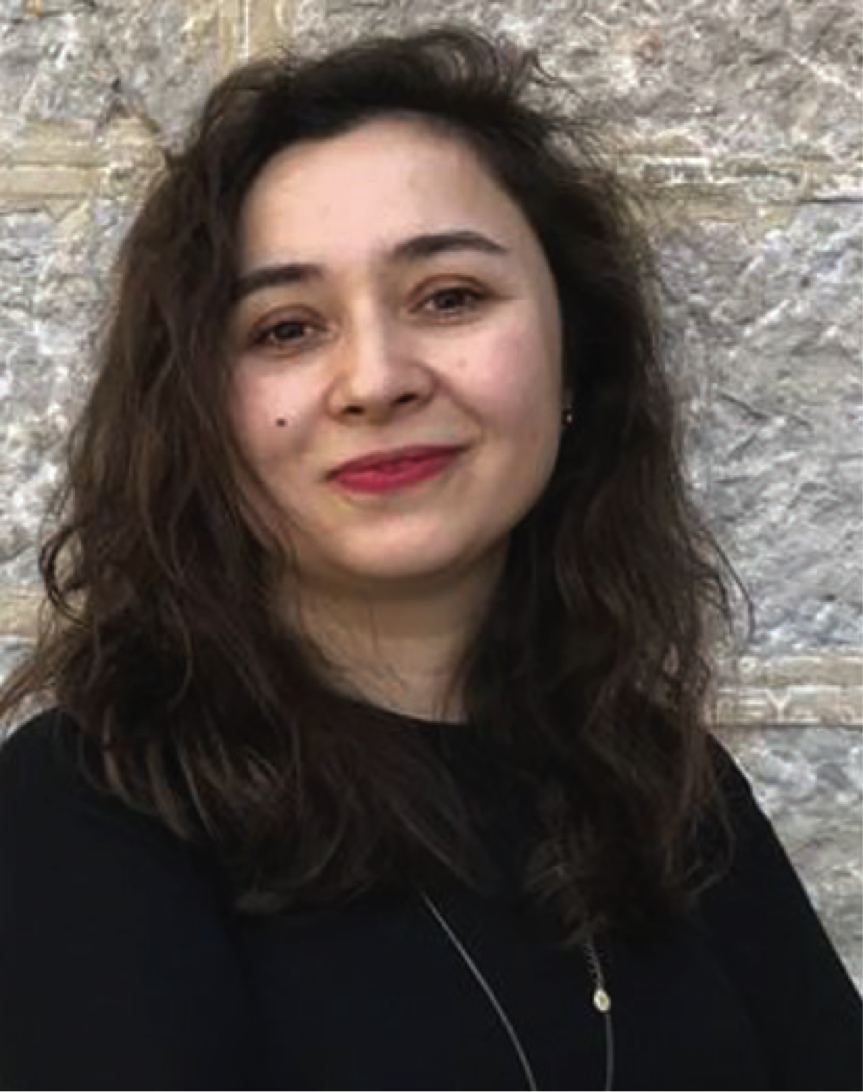
Emine Alarcin is an assistant professor of pharmacy at Marmara University, Turkey. She received her Ph.D. from Marmara University, Turkey from the Faculty of Pharmacy, and Department of Pharmaceutical Technology in 2011. Her Ph.D. research was mainly focused on fabricating polymeric microspheres for VEGF delivery in nerve graft prefabrication. She carried postdoctoral research fellow at Harvard Medical School in 2016–2017. Her current research focuses on developing multifunctional biomaterials, nanocarriers, and hydrogels for drug delivery applications and regenerative medicine.
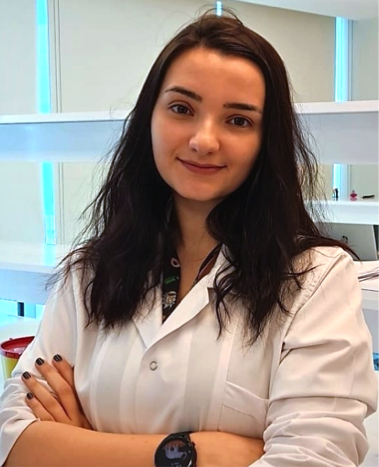
Gülşah Torkay graduated from the Biology Department of Istanbul University in 2020 as the top student, high honor (Magna Cum Laude) student, and third in the faculty. She studied in Poland as part of the Erasmus student exchange program during her undergraduate education and worked on a DNA barcoding project at the molecular genetics laboratory at Poznań Adam Mickiewicz University. She worked on drug resistance in cancer cells in an undergraduate student project funded by Istanbul University BAP unit. She received a travel scholarship at the 1st International Cancer Research Congress organized by the Molecular Cancer Research Association (MOKAD). During her undergraduate education, she took part in various projects and in the management team of a start-up that developed mobile health applications with artificial intelligence technologies. She obtained a domestic master's scholarship from TÜBTAK after being accepted to the İstinye University Graduate Education Institute Stem Cell and Tissue Engineering program with an academic merit scholarship. The TÜBİTAK 1002 project she wrote with her advisor Assoc. Dr. Ayça Bal ÖZTÜRK was accepted and she completed her thesis in the field of neural tissue engineering. At the MOKAD 2nd International Cancer Research Congress, she was awarded a young researcher scholarship. She is a co-founder of Ovoboard, a start-up backed by the TÜBTAK Individual Young Initiative 1512 program that performs chorioallantoic membrane testing, which are highly significant in cancer drug development studies. The company was formed by Kaan ADACAN and Remzi Okan AKAR's studies and operates under the supervision of Prof. Dr. Engin ULUKAYA. The angiogenic behaviors of active substances and tissue scaffolds are explored within the scope of the company using artificial intelligence-mediated image analysis. Tumoroids produced from cell lines and patient xenographs are also being examined for drug efficacy. Gülşah TORKAY participates in numerous research projects in addition to her entrepreneurial endeavors and thesis studies. She was deemed worthy of the 2022 Academic Incentive Award by İstinye University. Within the scope of the 1004-Center of Excellence Support Program carried out within Sabancı University, she works on developing sustainable advanced nanotechnological materials. In 2023, she started her PhD studies at Yıldız Technical University Bioengineering program. Her thesis is on applications of electroconductive biomaterials in neural tissue engineering. Gülşah TORKAY has 7 international SCI indexed research articles, 1 ESCI indexed national review paper, 1 national book chapter, and 13 national and international posters and oral presentations.
Remzi Okan Akar completed his undergraduate studies in Molecular Biology and Genetics, and pursued his master's degree in Cancer Biology and Pharmacology. He is currently working towards his PhD in Molecular Oncology. His research focuses on molecular cancer pathways, anti-cancer drug discovery, cell death, and in ovo studies. He holds memberships in the Molecular Cancer Research Association (MOKAD) and the European Association for Cancer Research (EACR). He has published 10 articles in international journals and holds a PCT patent for a potential anti-cancer compound. In addition to being a research assistant at the Medical Biochemistry Department of Istinye University Faculty of Medicine, he also works at the Istinye University Molecular Cancer Research Center (İSÜMKAM). Alongside his academic endeavors, he is a co-founder of Ovoboard Biotechnology Inc. The aim of the company is drug candidate molecule screening in fertilized chicken eggs. Ovoboard Biotechnology is working on the investigation of the Angiogenic effects of various active substances on the chorioallantoic membranes (CAM) of fertilized chicken eggs. In addition, it is also aimed to provide personalized treatment approaches by developing patient derived-xenograts for patients and test anticancer drug candidate molecules on cell line-derived tumors for researchers. Ovoboard Biotechnology was established in September 2022 after more than 20 studies and 2 years of R&D started in 2020.
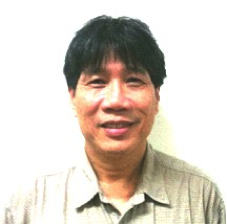
1. Dept. Mater. Sci., National Cheng-Kung UniversityNCKU), Taiwan, Ph.D.,1985/09~1989/11, Institute of Materials Sciences, Biomaterials; 2. Dept. Mater. Sci., NCKU, Taiwan, Master,1983/09~1985/06, Institute of Materials, Biomaterials; 3. Dept. Earth Sci., NCKUTaiwan, Bachelor, 1976/10~1980/06.
Experiences
- 2022/09- Researcher, IBEN, National Health Research Institute (NHRI)
- 2012/08-, Tenure Distinguish Prof., Inst. of Biomed.Eng., NTU
- 2014/08-2022/09, Director, Institute of Biomed Eng, NHRI, Taiwan
- 2008/08-2011/07, Director, Biomed.Eng. Div., NHRI
- 2006/12-2009/12, Convivision, Dept Eng. & Appl Sci., NSC, Taiwan
- 2005/08-2008/07, Director, Inst. Biomed. Eng., NTU
- 2002/08-2005/07, Director, Dept., BME Division., NTU-Hospital, NTU
Editorial Board Member (selected)
- International Journal of Molecular Sciences, (SCI, IF 6.208), 2017-1103-,
- Frontiers in Bioengineering and Biotechnology, (SCI, IF 6.064), 2018-0501-,
- The Journal of APL Bio-engineering, (SCI, IF 6.578) 2020-01-
Editor-in-chief
Journal of Biomedical Engineering, (SCI), 2007-2011
Awards (selected)
2004、2010、2015 Outstanding Research Award, NSC & MOST;2008 Taiwan Medicine Society, Dr. Cong-Ming Tu Outstanding Research Award; 2013 Outstanding Professor or Engineering, Taiwan Society of Engineering; 2013 Lecture Professor Award; 2019 Outstanding Research Achievement Award of NHRI; 2019 Outstanding Research Scholar of Dr. Zhao-ren Li Scholarship for Biomedical Engineering and Development Foundation; 2020 Gold Medal ofInnotech & Invention Expo;2020 Outstanding Research Achievement and Contribution Award of Wang Ming-Ning Memorial foundation; 2022 Distinguished Alumni Award of National Cheng Kung University
Over 500 SCI published since 1990; Discipline H-index 70; citations 14,228; World top 2% scientists consecutive 2 years (by Stanford University, USA); Ranking 32 in Materials Sciences in Taiwan.
Articular Cartilage Tissue Engineering – From Bench to Bedside
Abstract:Autologous fibrin glue has been demonstrated as a potential scaffold with very good biocompatibility for neocartilage formation. However, fibrin glue has been reported not to provide enough mechanical strength, but with many growth factors to interfere the tissue growth. Gelatin/hyaluronic acid/chondroitin-6-sulfate (GHC6S) tricopolymer sponge has been prepared as scaffold for cartilage tissue engineering and showed very good results, but problems of cell seeding and cell distribution troubled the researchers. In this study, GHC6S particles would be added into the fibrin glue to provide better mechanical strength, better cell distribution, and easier cell seeding, which would be expected to improve cartilage regeneration in vitro. Porcine cryo-precipitated fibrinogen and thrombin prepared from prothrombin activated by 10% CaCl2 solution were used in two groups. One is the fibrin glue group in which porcine chondrocytes were mixed with thrombin–fibrinogen solution, which was then converted into fibrin glue. The other is GHC6S-fibrin glue in which GHC6S particles were added into the thrombin–fibrinogen solution with porcine chondrocytes. After culturing for 1–2 weeks, the chondrocytes cultured in GHC6S-fibrin glue showed a round shape with distinct lacuna structure and showed positive in S-100 protein immunohistochemical stain. The related gene expressions of tissue inhibitor of metalloproteinases-1, matrix metalloproteinase-2, MT1-MMP, aggrecan, decorin, type I, II, X collagen, interleukin-1 b, transforming growth factor-b 1 (TGF-b1), and Fas-associating death domain were checked by real-time PCR. The results indicated that the chondrocytes cultured in GHC6S-fibrin glue would effectively promote extracellular matrix (ECM) secretion and inhibit ECM degradation. The evidence could support that GHC6S-fibrin glue would be a promising scaffold for articular cartilage tissue engineering.

Medical interests:
· Sports Surgery
· Joint Surgery
· Spine Surgery
Education:
· İstanbul Erkek High School
· İstanbul Faculty of Medicine
· Haydarpaşa Numune EAH
Experience:
· Liv Hospital Ulus
· Medicalpark Bahçelievler Hospital
· İstinye University Hospital
· Terme State Hospital
Research:
Articles:
1: Gumussuyu G, Asoglu MM, Guler O, May H, Turan A, Kose O. Extension pin block technique versus extension orthosis for acute bony mallet finger; a retrospective comparison.Orthop Traumatol Surg Res. 2020 Dec 23:102764.doi:10.1016/j.otsr.2020.102764. Epub ahead of print. PMID: 33333280.
2: Gumussuyu G, Asoglu MM, Unal M, Turan A, Kose O. Reliability of subluxation and articular involvement measurements during the assessment of bony mallet finger. Hand Surg Rehabil. 2021 Feb;40(1):87-92. doi: 10.1016/j.hansur.2020.08.008. Epub 2020 Sep 19. PMID: 32961286.
3: Unal M, Kose O, Aktan C, Gumussuyu G, May H, Kati YA. Is There a Role of Meniscal Morphology in the Risk of Noncontact Anterior Cruciate Ligament Rupture? A Case-Control Study. J Knee Surg. 2021 Apr;34(5):570-580. doi: 10.1055/s-0040-1713814. Epub 2020 Jul 13. PMID: 32659821.
4: May H, Alper Kati Y, Gumussuyu G, Yunus Emre T, Unal M, Kose O. Bioabsorbable magnesium screw versus conventional titanium screw fixation for medial malleolar fractures. J Orthop Traumatol. 2020 May 25;21(1):9. doi: 10.1186/s10195-020-00547-7. PMID: 32451727; PMCID: PMC7248135.
5: Polat Ö, Gümüşsuyu G, Aman T, Özcan Ç, Uçar BY. A new approach for spinal deformity patients with meningomyelocele: reverse Y incision. Br J Neurosurg. 2020 Aug;34(4):434-437. doi: 10.1080/02688697.2020.1753171. Epub 2020 Apr 17. PMID: 32301344.
6: Kaya O, Hurel C, Gumussuyu G, Kose O. Bilateral calcaneal insufficiency fractures due to chronic carbamazepine use for trigeminal neuralgia: A case report. Niger J Clin Pract. 2020 Apr;23(4):574-576. doi: 10.4103/njcp.njcp_515_18. PMID: 32246668.
7: Gumussuyu G, Islam NC, Kose O, Gungor M, Ozcan H. Comparison of Two Segment Combined Instrumentation and Fusion versus Three Segment Posterior Instrumentation in Thoracolumbar Burst Fractures: A Randomized Clinical Trial with 10 Years of Follow Up. Turk Neurosurg. 2019;29(4):555-563. doi: 10.5137/1019-5149.JTN.25025-18.3. PMID: 30900733.
8: Gokcen HB, Gumussuyu G. A Quality Analysis of Disc Herniation Videos on YouTube. World Neurosurg. 2019 Feb 2:S1878-8750(19)30246-3. doi: 10.1016/j.wneu.2019.01.146. Epub ahead of print. PMID: 30721774.
9: Gümüşsuyu G, Çaçan MA, Mertsoy Y, Alrashdan A, Uçar BY. Is It Difficult to Dominate the Coronal and Sagittal Planes in Convex Rod Rotation Technique? The Effect of the Ucar Convex Rod Rotation Technique. J Pediatr Neurosci. 2018 Jan- Mar;13(1):58-61. doi: 10.4103/JPN.JPN_149_17. PMID: 29899772; PMCID: PMC5982493.
10: Canaz H, Alatas I, Canaz G, Gumussuyu G, Cacan MA, Saracoglu A, Ucar BY. Surgical treatment of patients with myelomeningocele-related spine deformities: study of 26 cases. Childs Nerv Syst. 2018 Jul;34(7):1367-1374. doi: 10.1007/s00381-018-3731-z. Epub 2018 Jan 25. PMID: 29372371.
11: Gokcen HB, Erdogan S, Gumussuyu G, Ozturk S, Ozturk C. A Rare Case of T1-2 Thoracic Disc Herniation Mimicking Cervical Radiculopathy. Int J Spine Surg. 2017 Nov 28;11(4):30. doi: 10.14444/4030. PMID: 29372134; PMCID: PMC5779266.
12: Gokcen HB, Erdogan S, Ozturk S, Gumussuyu G, Bayram I, Ozturk C. Sagittal orientation and uniform entry for thoracic pedicle screw placement with free- hand technique: A retrospective study on 382 pedicle screws. Int J Surg. 2018 Mar;51:83-88. doi: 10.1016/j.ijsu.2018.01.006. Epub 2018 Jan 31. PMID: 29367042.
13: Uçar D, Uçar BY, Coşar Y, Emrem K, Gümüşsuyu G, Mutlu S, Mutlu B, Caçan MA, Mertsoy Y, Gümüş H. Retrospective cohort study of the prevalence of lumbosacral transitional vertebra in a wide and well-represented population. Arthritis. 2013;2013:461425. doi: 10.1155/2013/461425. Epub 2013 Jun 24. PMID: 23864947; PMCID: PMC3707212.
14: Canbora K, Ozyurek S, Gumussuyu G, Kose O. Triceps tendon avulsion and associated injuries of the elbow. BMJ Case Rep. 2013 May 9;2013:bcr2013009460. doi: 10.1136/bcr-2013-009460. PMID: 23667221; PMCID: PMC3669868.
15: Durakbasa MO, Gumussuyu G, Gungor M, Ermis MN. Distal humeral coronal plane fractures: management, complications and outcome. J Shoulder Elbow Surg. 2013 Apr;22(4):560-6. doi: 10.1016/j.jse.2012.07.011. Epub 2012 Sep 13. PMID: 22981357.
Memberships:
· TOTBİD
· Turkish Spine Association
· AO SPINE
Awards:
· NATIONAL TURKISH ORTHOPEDICS AND TRAUMATOLOGY CONGRESS 29 October - 3 November 2013 First prize in the poster presentation category with the modified extending rod technique study in early-onset idiopathic scoliosis.
Knee Osteoarthritis Treatment Algorithms: Perspectives of patients, clinicians and researchers
Abstract: Osteoarthritis is a degenerative joint disease characterized by the breakdown of cartilage in joints, leading to joint pain, stiffness, swelling, and reduced range of motion. Age, genetics, joint injury, obesity, and joint overuse are among the factors that can contribute to the development of osteoarthritis. Symptoms can range from mild to severe and tend to worsen over time. Orthopedic surgeons take a comprehensive approach to osteoarthritis management, aiming to alleviate symptoms, improve joint function, and enhance the patient's quality of life. Medical therapy involves nonsteroidal anti-inflammatory drugs, glucosamine and chondroitin sulfate. Corticosteroid injections provide pain relief and reduce inflammation. Hyaluronic acid injections aim to supplement the joints natiural synovial fluid and provide lubrication. Platelet-rich plasma Therapy promotes healing anf reduces inflammation. Stem cell therapy regenerates cartilage. Also using assitive devices like braces, splints can reduce stress on affected joints. As surgeons also we need to consider surgigal options like total joint replacement , partial joint replacement, joint preservation surgery, osteotomy, cartilage repair and transplantation.

